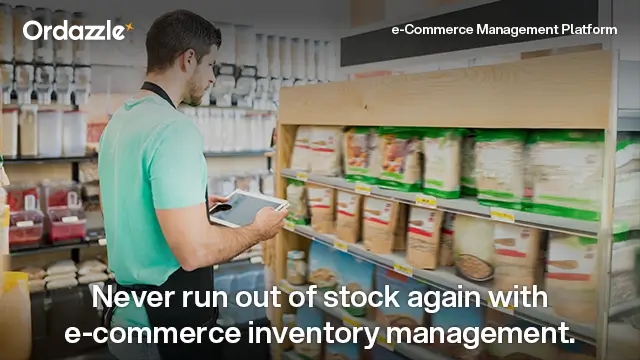How to Choose the Right E-commerce Inventory Management System for Your Business

The trick to scaling your e-commerce business successfully is to predict what you will need in the near future. If you wait for the need to arise and then start looking for solutions, you will end up wasting a lot of time and leaving money on the table.
When you’re starting off with your e-commerce business, it is very easy to manage your inventory manually. The average number of orders per month is low, and you have no issues keeping track of the volume of demand. But, if you want to scale up, you need to prepare your system beforehand. You need to be able to handle large volumes of orders on short notice. This is where the need for an e-commerce inventory management system comes in.
An effective inventory management system can streamline operations and reduce costs. In this blog, we will discuss the factors to consider and the steps to take when choosing the right e-commerce inventory management system for your business.
Factors to consider when choosing an e-commerce inventory management system
Size and complexity of your business
The size and the innate specifications of your brand will have an impact on the type of inventory management system you opt for. For instance, smaller businesses may require a simple and easy-to-use system with basic features, while larger businesses may require a more complex system that can handle multiple warehouses, suppliers, shipping service providers, and sales channels.
Type of products sold
The type of product determines a lot of variables in your operating system. If you sell perishable items, for instance, you will need a system that can track expiration dates and manage stock levels to prevent spoilage. If you sell products with variations such as size, colour, or material, you will need a system that can manage these variations.
Sales channels
If you have an omnichannel sales strategy, or if you want to opt for multiple sales channels in the future, make sure you choose an inventory management system that can support those aspirations. You will need a system that can sync inventory levels across all channels.
Integration with other systems
You’re not going to use the inventory management system in isolation. It has to be compatible with all your other systems, for accounting or lead management or marketing. Implementing a system that offers easy integration and plug-ins will save time and effort in the long run.
Cost and pricing models
The cost and pricing models of different inventory management systems can vary significantly. Some systems charge a flat monthly fee, while others charge based on the number of SKUs or orders processed. Make sure you make allowances in your budget and pricing structure.
Customisation and scalability
The ability to customise and scale your inventory management system is important as your business grows. You will need a system that can adapt to your changing needs and scale with your business.
User-friendliness and ease of use
The system should have a clear and intuitive interface that allows you to manage your inventory efficiently. If it is difficult to use, then it will not fit into your routine, and you will not be able to realise its full potential.
Customer support and service
You should choose a provider that offers excellent customer support and service to ensure that any issues or problems are quickly resolved. No matter how advanced or technologically sound the system is, there is always the chance that you will need assistance. That assistance should be readily available in your time of need.
How to choose an e-commerce inventory management system
Define your business needs and requirements
The first step is to define your needs and requirements. You need to have clarity on where you are and what you are aiming to achieve. This includes determining the size and complexity of your business, the type of products you sell, the sales channels you use, and your budget.
Research and compare different systems
The next step is to research and compare different systems available in the market. You can check the user reviews for a more authentic understanding of the pros and cons. Look for systems that meet your business needs and requirements, and compare their features, pricing, and customer reviews.
Request demos and trials
Once you have narrowed down your choices, request demos and trials from the providers. This will allow you to test the system and evaluate its features and usability.
Seek advice and reviews from other e-commerce businesses
If you’re not sure whether you’re making the right choice, bring in another set of eyes. Feel free to reach out to your peers for review and advice. Speaking to people who have used the inventory management systems you are considering can provide valuable insights.
Make a decision based on your evaluation and analysis
Choose the inventory management system that best fits your business needs, budget, and requirements. Don’t forget to consider the long-term implications of your decision and choose a system that can scale with your business as it grows.
Conclusion
Choosing the right e-commerce inventory management system is crucial for the success of your online business. It can help you streamline operations, reduce costs, and improve customer satisfaction. Ordazzle, for instance, offers a full-service inventory management system that can help you to scale your e-commerce business. It can support your business as you grow and integrate with your website or marketplaces through easy-to-use APIs.


